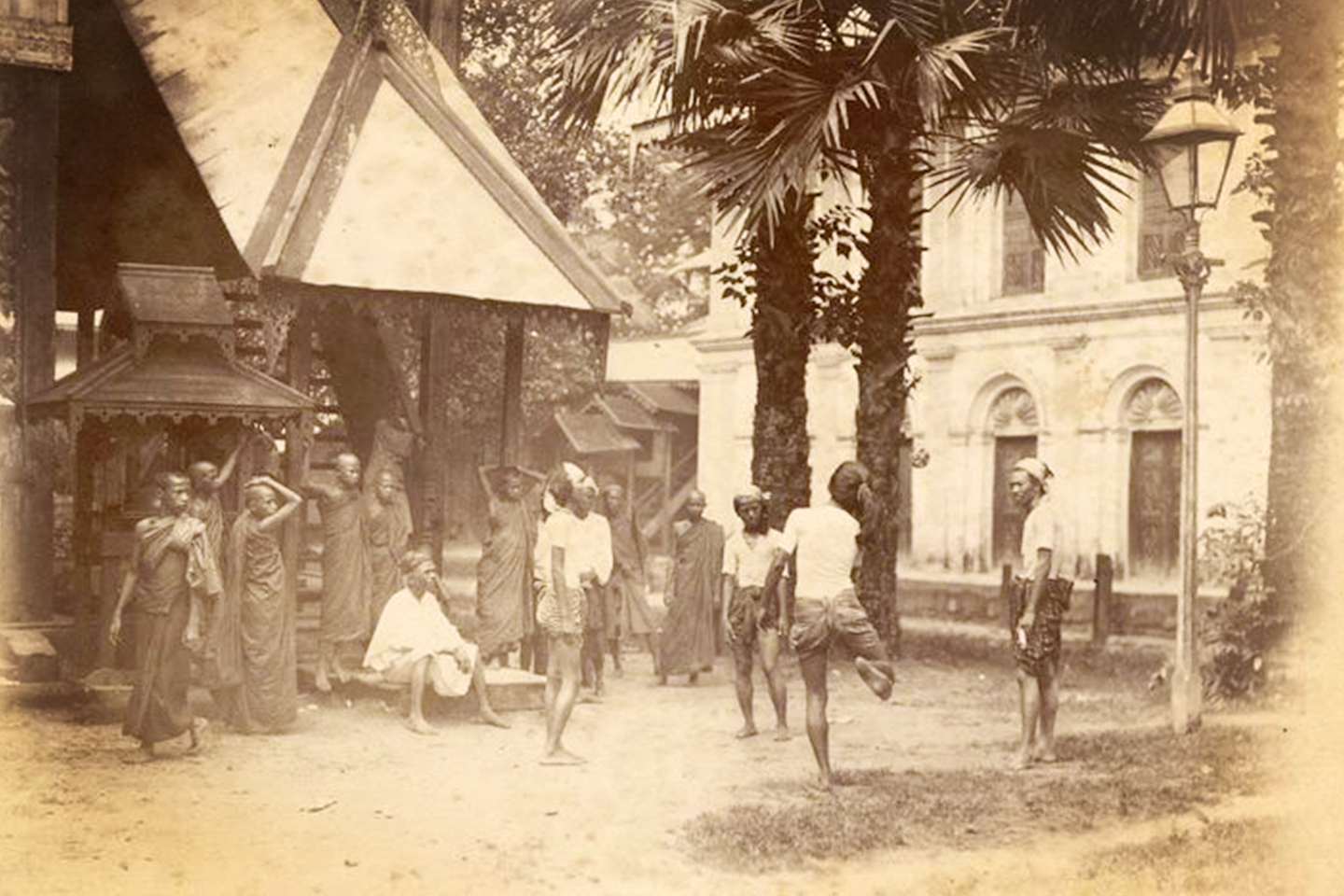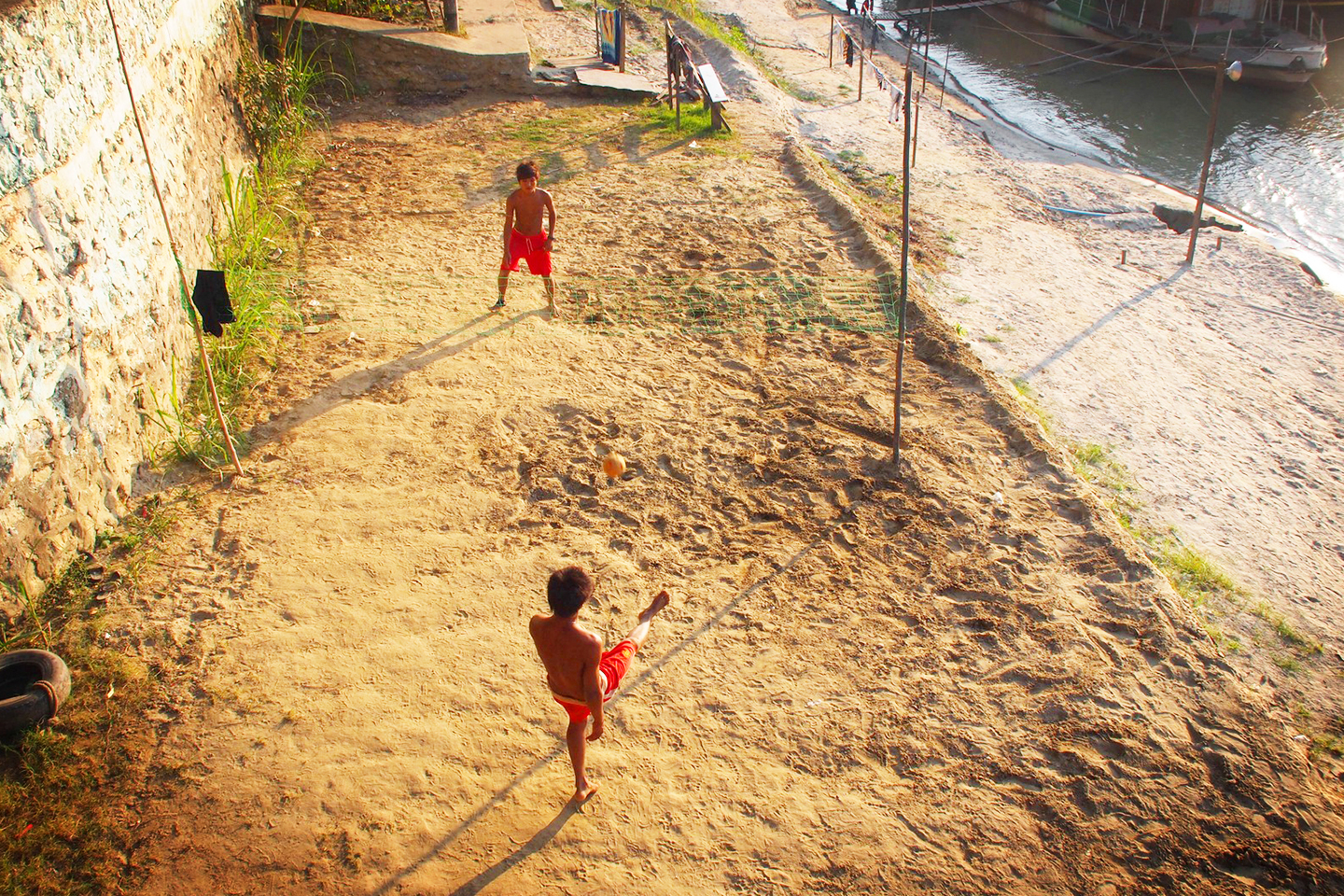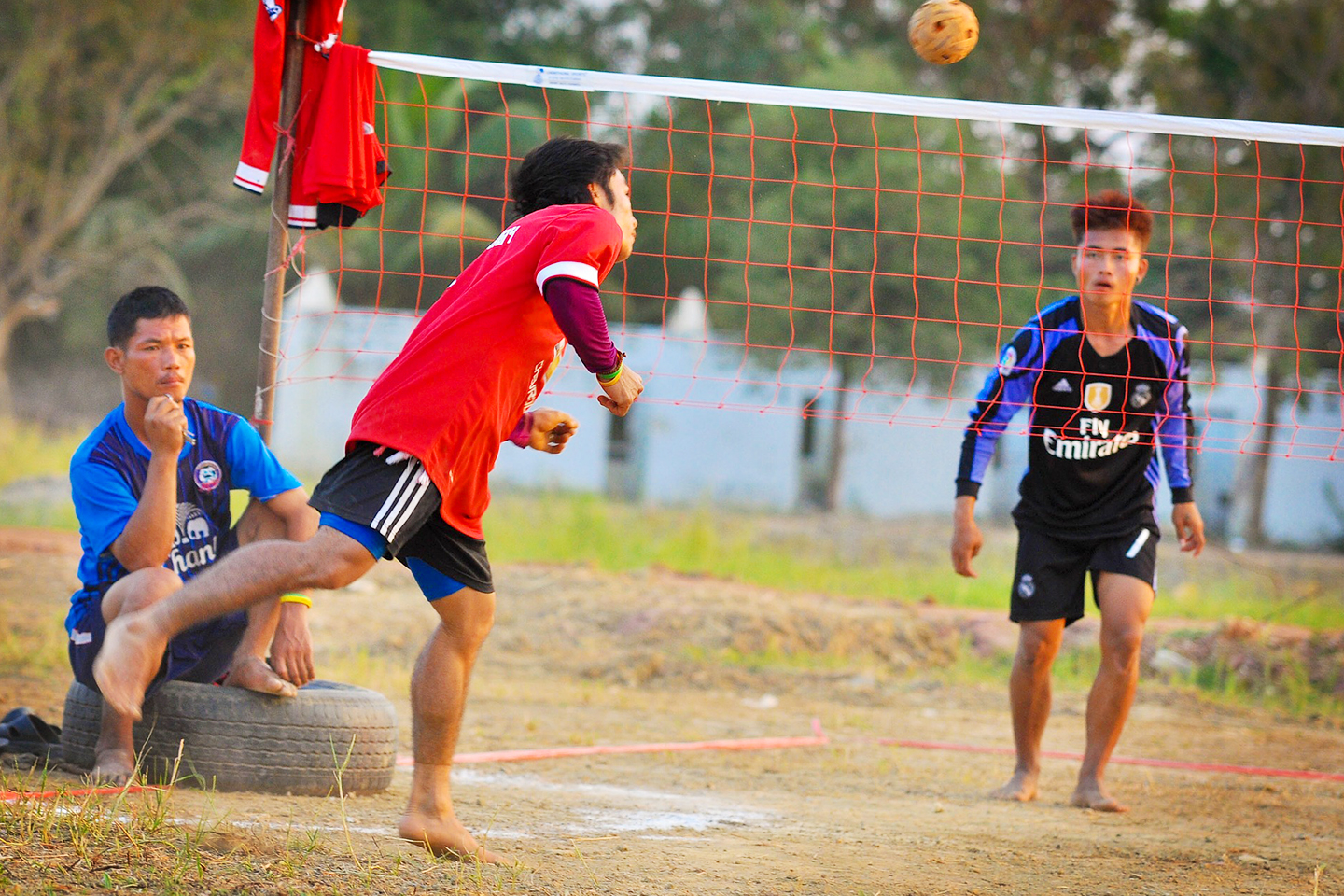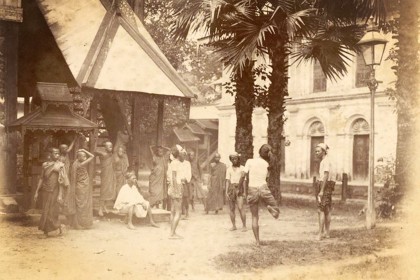Chinlone, the traditional sport of Myanmar
2018-08-17edit Mon Photo by Paul Arps
Photo by Paul Arps
Chinlone (means “rounded basket” in Myanmar language), also known as a cane-ball, is a traditional sport of Myanmar. The standard size of the ball is 5.75 inches in diameter and using small strips of rattan to weave a Chinlone which has 12 pentagon shaped voids. It is made of rattan and which is not only very light but also springy. There are three types of Chinlone which are being played across the country. They are “Pai Kyaw Chin” (two teams play over a net), “Chin Wine” (the players stood in a circle with one player in the middle and toss the ball without falling it to the ground) and “Ta Pin Daing” (solo performance usually by females). The first one, "Pai Kyaw Chin" isn't Myanmar traditional sports, which is actually invention of the Thailand. But, now a day, the sports is being played around the Myanmar. The Myanmar traditional Chinlone Festival focuses on “Chin Wine” and displaying the talent in a form of entertainment for the public.
History of Chinlone
 Chinlone was being played over 1500 years in Myanmar and which was a kind of entertainment than a sport in ancient days. In 1953, the rulebook for Chinlone was ordered to written by Burmese government to U Ah Yein who is the head of the Burma Athletic Association. The first official Chinlone competition was held at the same year in Rangoon (Yangon). There are also similar sports in Southeast Asian countries such as Da Cau from Vietnam, Kator from Laos, Sepak Raga from Malaysia, Singapore, Brunei and Indonesia, Sipa from Philippines and Takraw from Thailand.
Chinlone was being played over 1500 years in Myanmar and which was a kind of entertainment than a sport in ancient days. In 1953, the rulebook for Chinlone was ordered to written by Burmese government to U Ah Yein who is the head of the Burma Athletic Association. The first official Chinlone competition was held at the same year in Rangoon (Yangon). There are also similar sports in Southeast Asian countries such as Da Cau from Vietnam, Kator from Laos, Sepak Raga from Malaysia, Singapore, Brunei and Indonesia, Sipa from Philippines and Takraw from Thailand.
How to play Chinlone?
 Photo by Paul Arps
Photo by Paul Arps
Chinlone can be played with a team or solo. The team consists of 6 players and all of them standing inside the circle which is around 22 feet in diameter. They keep tossing the ball without falling to the ground and passing it back and forth to each other using their feet, knees and heads. One of the player moves into the middle of the circle to perform a solo and other players assist that player. They show the techniques with various moves creatively and beautifully with the best of their skill till the ball drops on the ground and the new play can start. Another player of a team may take the center place as soon as the new play starts. In Chinlone, there are six points of contact that are used to toss the ball which are: the top of the toes, the heel, the inner and outer sides of the foot, the sole of the foot, and the knee without using the hands and arms. There are over 200 different methods of contacting the ball since the game was first invented and some difficult moves include “the blind kick” which is performing behind the back without seeing the ball. This sport needs extreme flexibility, quickness, technique, fitness, unique coordination style and power. Chinlone can play in a single performance style, known as “Ta Pin Daing”, and which is typically performed by women to show off the beauty art of Chinlone with the combination of dance movements. The crowds are enjoying the extraordinary talent of tossing and keeping the ball in the air for a long time with different kicking styles. A skillful player can play with four to eight balls to inspire the crowds with her stunning movements while the traditional music is playing at the background.
Who can play Chinlone?
 There is no gender or age limits for Chinlone nowadays. It is played amongst men and women in different ages without any barriers.
There is no gender or age limits for Chinlone nowadays. It is played amongst men and women in different ages without any barriers.
What to wear?
 Chinlone is usually played barefoot or Chinlone shoes which is specially made for the players to feel the ball but there is no specific rules for what players should wear. The players normally wear something comfortable clothes to play and some men hitch up and wrap their longyi in both rural and urban areas. But in the professional competition, the players generally wear matching jerseys and shorts together in the same team.
Chinlone is usually played barefoot or Chinlone shoes which is specially made for the players to feel the ball but there is no specific rules for what players should wear. The players normally wear something comfortable clothes to play and some men hitch up and wrap their longyi in both rural and urban areas. But in the professional competition, the players generally wear matching jerseys and shorts together in the same team.
Chinlone Festival
The Chinlone festival celebrates annually in Warso (usually in July), the fourth month of the Myanmar lunar calendar, and it held in a small stadium in the compound of Mahamuni Pagoda in Mandalay. The festival usually lasts for a month and played from 9 am in the morning till midnight everyday. The players and teams from all over the country travel to Mandalay to participate in this festival. The running commentary is made by a commentator and the judges adjudicate the players and teams on their performance.
Review

Be the first to leave a review.
 English
English 日本語
日本語 မြန်မာ
မြန်မာ 汉语
汉语 國語
國語 ภาษาไทย
ภาษาไทย
